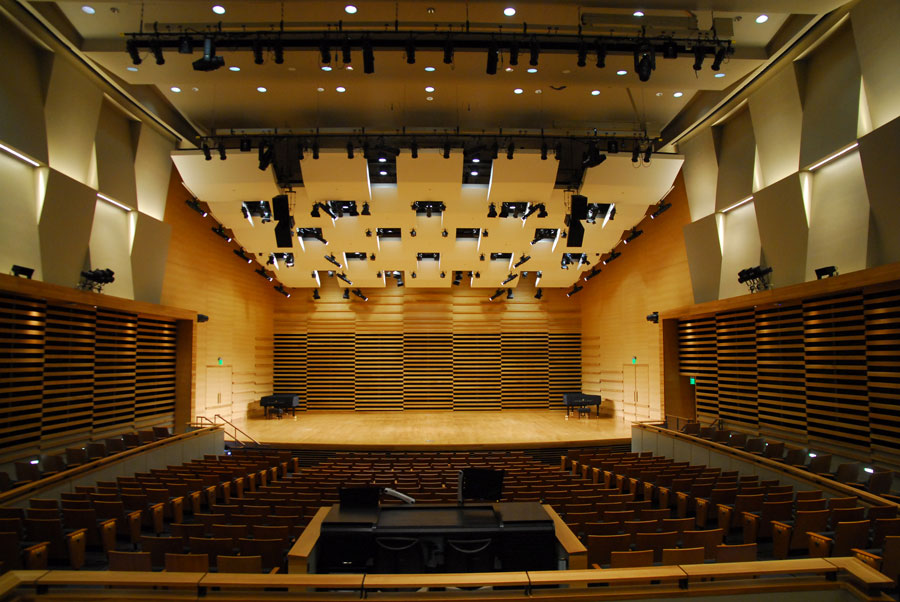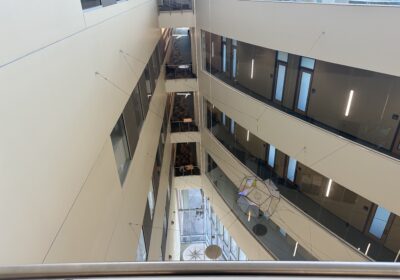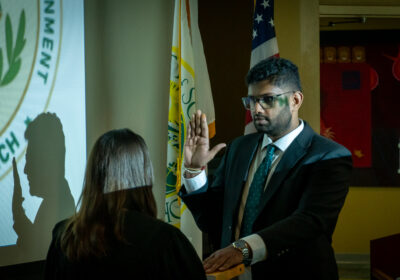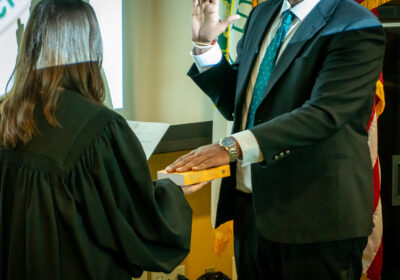Performing arts prepare for a full return to the stage

After a year of performing in his living room in view of the Zoom camera, senior dance major Matthew Sommers is ready to leap back into a real spotlight as he takes the stage alongside his fellow dancers once again.
“Personally, I am so ready for this,” said Sommers. “A lot of other dance majors and myself have been itching to get back into a studio, on a real stage, being able to touch each other and have that human connection that we’ve been missing the past year.”
Throughout the entirety of the pandemic, students like Sommers have eagerly awaited returning to a real stage. Now, a season of in-person performances awaits them in the fall.
“We would like to go back to having an audience, because there’s nothing like the sort of interplay between the audience and the performers,” said Amanda Clark, marketing coordinator for the USF School of Theatre and Dance.
The upcoming lineup of performances was decided in December. Clark said the department has planned a full in-person season for the fall semester featuring a staged reading Sept. 26 at 3 p.m. and Sept. 27 at 7:30 p.m., a workshop performance in early October, two dance concerts in October and November and a play in November.
For music majors, the lineup will closely resemble that of music and dance performances, according to Dean of the College of the Arts Chris Garvin, with 10 total concerts already set beginning Sept. 19. Wind ensemble, symphonic band, symphonic orchestra, jazz ensemble and the choirs will each have two in-person performances in the fall.
While no specific COVID-19 protocols have been announced yet as to how rehearsals and performances will operate, Garvin reassured that the College of the Arts will be following guidelines given by USF and the Centers for Disease Control and Prevention (CDC). This includes encouraging mask wearing among unvaccinated individuals.
Prior CDC guidance had students performing remotely over the past year, with many of their classes, rehearsals and performances taking place from behind cameras and computer screens. Maya Quinones, a senior majoring in theater performance and communications, said her theater studies and performances were strictly virtual.
“In the fall semester, all of my theater study was online except for the main stage production of ‘Measure for Measure’ that I was cast in,” said Quinones. “Spring 2021 we were still online, but for a few weeks we tried out in-person classes. Overall that didn’t exactly work out due to everybody’s schedule and safety preferences, so we moved back online.”
The production of “Measure for Measure,” a Shakespearean play, went on hiatus in March 2020 and was brought back to the stage in the fall later that year to be livestreamed for a virtual audience, according to Quinones.
Like Quinones, junior dance major Savannah Fredericks’ performances were completely virtual as well which proved to be a major obstacle.
“Performing virtually was much harder than having a live audience to dance in front of,” she said. “For the virtual concerts, we had to film dances over and over until we were content with our performance. It was pretty tiring having to do our dances multiple times in a row.”
At the same time, students in the School of Music like Adaline Burwell, senior music education major, also had a hard time navigating their studies online.
“For music education, there were zero opportunities to work in schools because of COVID,” said Burwell. “Other than a few virtual observations, I will be starting my internship next semester never having stood in front of a classroom.”
Burwell, who plays piano for the musical performance requirement of their major, revealed that COVID-19 restrictions had greatly affected rehearsals and concerts in the School of Music as well.
“In a normal semester we rehearse four hours a week, but with COVID restrictions we were only able to rehearse in 30-minute blocks and very rarely as a full ensemble,” Burwell said. “All concerts were live streamed or prerecorded because there were no audiences allowed at all.”
With the lack of in-person instruction, performance and collaboration, some students feared they weren’t getting the most out of their performing arts major. Sommers said he felt like he didn’t fully benefit from his dance study over the past year.
“We were not able to get the same instruction and correction over Zoom,” he said. “[It’s the] lack of space and the fact that it is just hard to see people in their little Zoom boxes, especially when there are multiple people in the Zoom [call].”
Burwell shared a similar sentiment, recognizing that their instructors and colleagues most likely felt the same way.
“I’m definitely not as well equipped as a music education major in a lot of ways, however everyone, even current teachers, were faced with a lot of challenges, so I think everyone is kind of in the same boat,” they said.
Conversely, Fredericks viewed remote instruction during the pandemic as an opportunity to grow as a contemporary dancer.
“I was able to concentrate more on myself, which is hard for me when I am in a room filled with other dancers just like me,” Fredericks said.
“Getting the chance to be by myself was eye opening. I noticed things about my dancing that I would’ve never noticed if I wasn’t dancing alone with my computer showing only my instructor on Zoom.”
While Fredericks would have enjoyed performing live the past year, she felt that a benefit of online performances was the ease with which her loved ones were able to watch her dance.
“I was disappointed that I never got the chance to dance in front of an audience, but I’m glad that we were able to make things work during the pandemic,” said Fredericks. “Our concerts were all free and easily accessible online which made it so much easier for friends and family to watch my virtual performances.”
All virtual performances by the College of the Arts are publicly posted and accessible through its YouTube channel. Productions and concerts for the upcoming school year, however, are expected to be held in front of live audiences again.
Making performances for all majors more accessible to the community was something Garvin felt was incredibly valuable, and he said the college would be doing more recordings to share in the upcoming years as performers return to the stage.
“We’ve been able to look at how we define performance and how we think about it,” he said. “We will do the in person things but we’re going to offer those access points to broaden our audiences and to do more for people in our community of people around the world.”
Quinones expressed her confidence in a return to normalcy, with no doubts nor uncertainties about returning in person.
“Being fully vaccinated, I don’t have too many anxieties about in-person theater moving forward,” said Quinones. “I would be more than willing to return back to normal, under any necessary precautions they see fit.”
Emma Nelson, a sophomore, is a trumpet player in the wind ensemble, symphonic band and HOT band. She said being able to feel the energy after a performance is something she has really missed and is most excited to feel again this year.
“I’m most excited to get to feel closer to my bandmates and to play for a true audience again in-person to see the kind of effect music has,” she said.
“It has been difficult to finish a performance and just hear silence, it was very strange and foreign. I’m excited to feel a buzz again after performing.”
It is important to get back in front of live audiences, according to Garvin, because of the impact of the feeling Nelson described.
“So much of the arts is about that human connection, that kind of unquantifiable spirit that happens. It feels great, and I think a lot of people were really excited to get back to that feeling,” he said.
Additional reporting by Audra Nikolajski.






